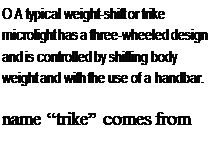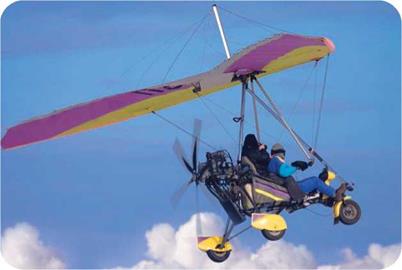Regulating Microlights
At first, homebuilt microlights had a poor reputation for safety; they were flimsy, and pilots flew without any proper training. Safety has improved. Some countries now require microlight pilots to have a license or certificate, and the aircraft themselves have to be certified as airworthy. France and the United States have the fewest regulations on microlight flying; Germany, Italy, and the United Kingdom are the strictest nations.
In the United States, it is possible to fly an ultralight without holding a pilot’s license, although sensible beginners learn how to fly from an experienced pilot. A sport pilot’s certificate is required to fly light-sport aircraft. A light-sport aircraft has a maximum weight of 1,320 pounds (600 kilograms) and a maximum speed of 138 miles per hour (222 kilometers per hour).
An ultralight pilot is allowed to do simple maintenance tasks at home, just as a person might work on a car or bicycle. Regulations restrict ultralight flying in populated areas, and pilots are not supposed to fly in bad weather or at night. Many experienced airplane


 |
pilots have become microlight enthusiasts, and this has helped raise the standards of piloting.










